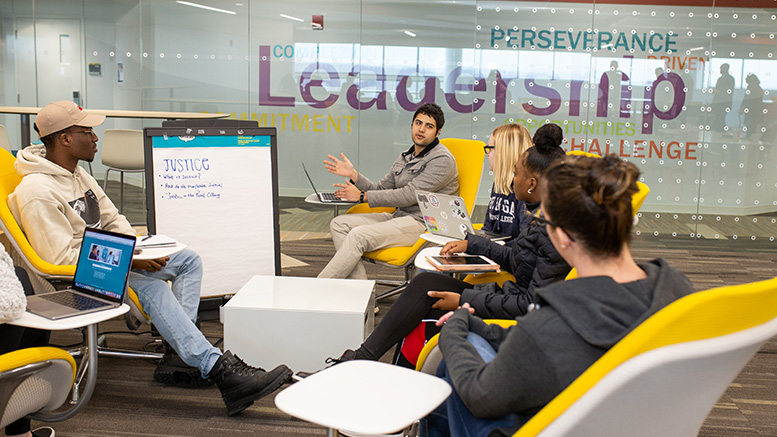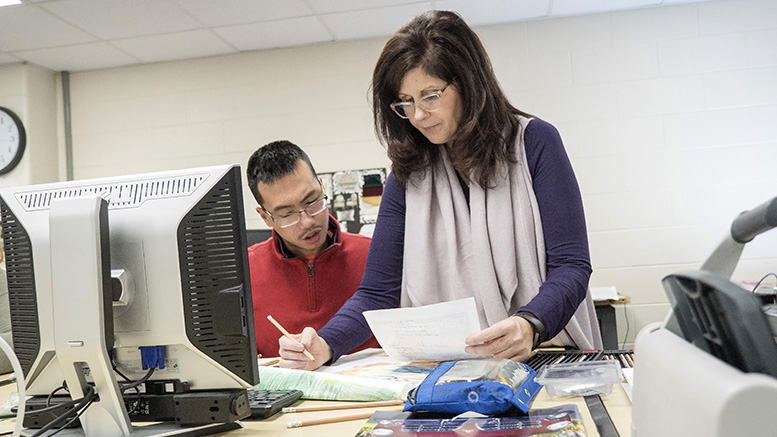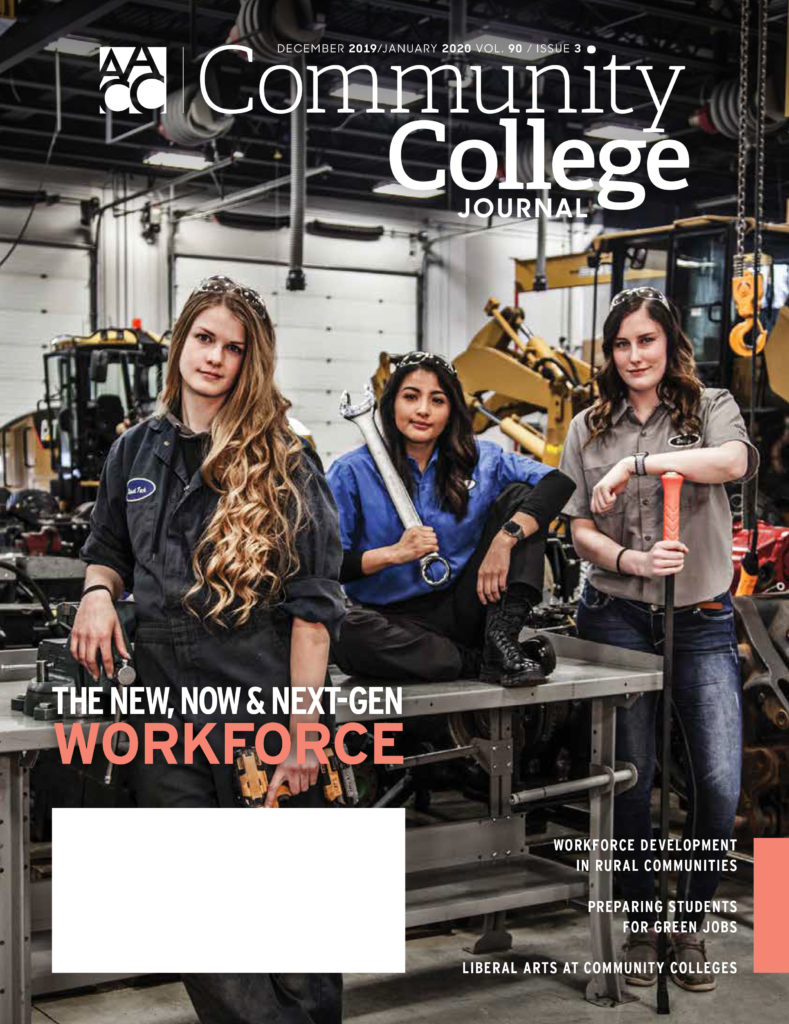Are the humanities and liberal arts in decline across America’s colleges and universities? Not according to a study from the Community College Research Center, which reports that the number of undergraduate liberal arts degrees granted annually at two-year institutions has increased since 2000.
Furthermore, although the share of liberal arts degrees awarded at four-year colleges has fallen over the last 15 years, the absolute number of degrees given out at both community and four-year schools has risen. Community college educators observing these trends say liberal arts majors have much to contribute to the national workforce — including coveted science and technology jobs — with more companies recognizing the value of putting well-rounded employees on their payrolls.
“Smart employers know the value that humanities can bring to the table,” says Andrew Rusnak, executive director of the Community College Humanities Association, a national organization for two-year humanities faculty and administrators. “Companies want an imaginative contribution from employees to improve efficiency and make better products. That’s more valuable to them than someone who can just put widgets together.”
This excerpt comes from the current issue of Community College Journal, which this year celebrates its 90th year of publishing.
Indian technology firm Infosys Ltd. is linking with liberal arts-focused U.S. universities, supporting programming aimed at versatile students able to collaborate and solve complex problems. Community colleges are penning articulation agreements with universities, helping liberal arts learners transition from an associate degree to a bachelor’s degree to the workforce prospects these qualifications provide.
In 2016, County College of Morris (CCM) in New Jersey signed an articulation agreement with West Virginia University that allows students in sociology and anthropology — among a host of other disciplines — to transfer credits in advancement of their academic dreams.
CCM has a similar arrangement in place with Fairleigh Dickinson University in creative writing, while high-achieving English learners can transition into Drew University’s bachelor of arts program. Overall, CCM offers a host of degrees, certificates and courses in the arts, humanities and social sciences, says James Hart, CCM’s interim dean of liberal arts.
“Our liberal arts majors take six credits in social science and six credits of a language or literary sequence as part of their educational foundation,” Hart says. “We try to prepare students with these foundations so they hit the ground running at a four-year institution.”
Transfer advisors give liberal arts enrollees a roadmap of 200-level courses — including a class on the African-American experience and a new course on fantasy literature — that ready students for 300- and 400-level courses as well as requirements for a bachelor’s degree.
“A student might take intercultural communication as a diversity elective, because a four-year institution says the course provides a vision forward on how to get that student to their ultimate goal,” Hart says. “Part of the articulation agreement is going to be creating that pathway for transfer.”
Countering a ‘crisis’
Despite declines in the number of liberal arts bachelor’s degrees awarded by four-year colleges, the growth in liberal arts at community colleges has made up the difference, countering a national narrative that the field is in crisis.
As designated by the National Foundation on the Arts and the Humanities Act, the liberal arts cover a range of college subjects, from modern and classical languages to philosophy to arts theory. Per Community College Research Center findings, about one-fifth of all community college courses are in humanities and liberal arts fields, with more than a quarter of every undergraduate degree composed of liberal arts coursework.
In its study of liberal arts at two-year colleges, CCRC found the number of associate degrees in this area ballooned by 88 percent — from 218,000 to 410,000 — between 2000 and 2015. The share of associate degrees in liberal arts fields increased from 38 percent to 41 percent over that time.
All degrees — even in the areas of science, technology, engineering and math (STEM) — involve a proportion of coursework in humanities and liberal arts. STEM and health associate degree earners take more than 20 percent of their credits in these disciplines, CRCC study noted.
“The humanities and liberal arts—measured by degrees awarded, majors or course enrollments — remain a large, robust part of the U.S. postsecondary sector,” says Clive R. Belfield, one of the authors of two reports released by the CCRC in June. “If these fields are in crisis, so must be all college education.”
Concern that universities aren’t producing enough STEM majors has fostered discussion on liberal arts’ place in higher ed curriculum. As states wrangle over the STEM skills gap, community college educators are busy busting myths about philosophy or English majors contributing to the country’s industrial decline. On the contrary, observers say liberal arts graduates are more adaptable than their strictly technologically-minded peers, considering creative communication is needed for operation of increasingly intricate technological systems.
“CCM’s approach around the workforce and liberal arts is not mutually exclusive,” Hart says. “We try and link the two, because students entering the workforce need the solid foundation the liberal arts provides.”
A focal point
Cleveland-based Cuyahoga Community College (Tri-C) has an entire center devoted to the study of the humanities: The Jack, Joseph & Morton Mandel Humanities Center presents seminars, lectures, civic engagement and collaborative learning opportunities spotlighted on development of critical thinking and leadership talents.
Launched via a $10 million gift from the Jack, Joseph and Morton Mandel Foundation, the center’s focal point is a Scholars Academy providing learners an array of coursework, including a three-credit Individual in Society class on justice, generosity and living well in a diverse culture. Participating students are paired with a Tri-C staff member to navigate their career goals.

In Cleveland, Ohio, Cuyahoga Community College’s Jack, Joseph & Morton Mandel Humanities Center is cultivating responsible citizens. (Photo: Tri-C)
Co-curricular programming, meanwhile, connects students and community partners on various projects, notes Matthew Jordan, dean of humanities at the center. Tri-C scholars recently acted as consultants on development of a “race report card,” which assessed the status of race relations in Northeast Ohio.
Coupling academy programming with the large number of liberal arts courses already available aligns Tri-C with Ohio Transfer Module mandates guaranteeing transference of applicable credits among the state’s colleges and universities. Since inception, the center has also established close partnerships with the Mandel Honors College at Cleveland State University and the Cleveland Humanities Collaborative at Case Western Reserve University.
“We’re giving liberal arts students the same general education courses they’d have at one of our four-year institutions,” Jordan says. “Lots of our students have opportunities to do real research and presentations at conferences, too.”


